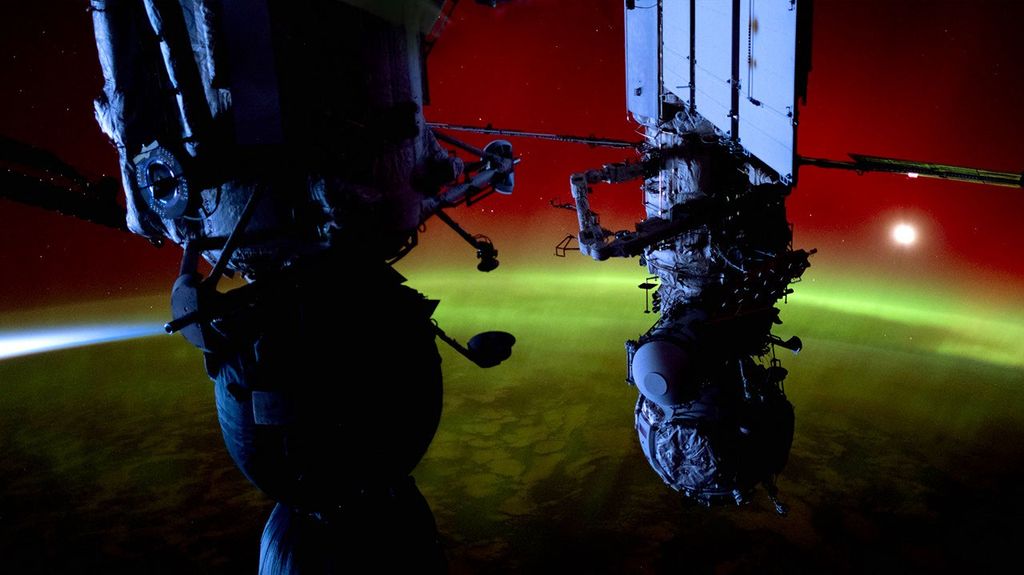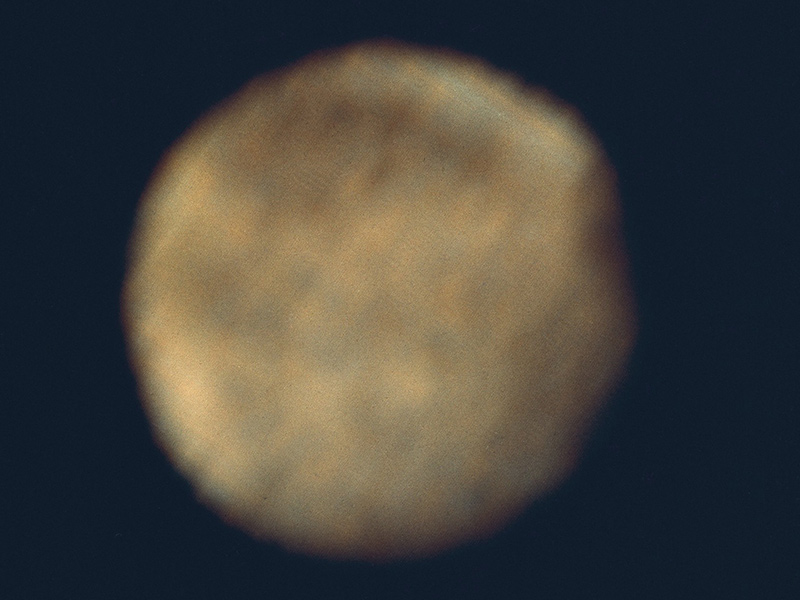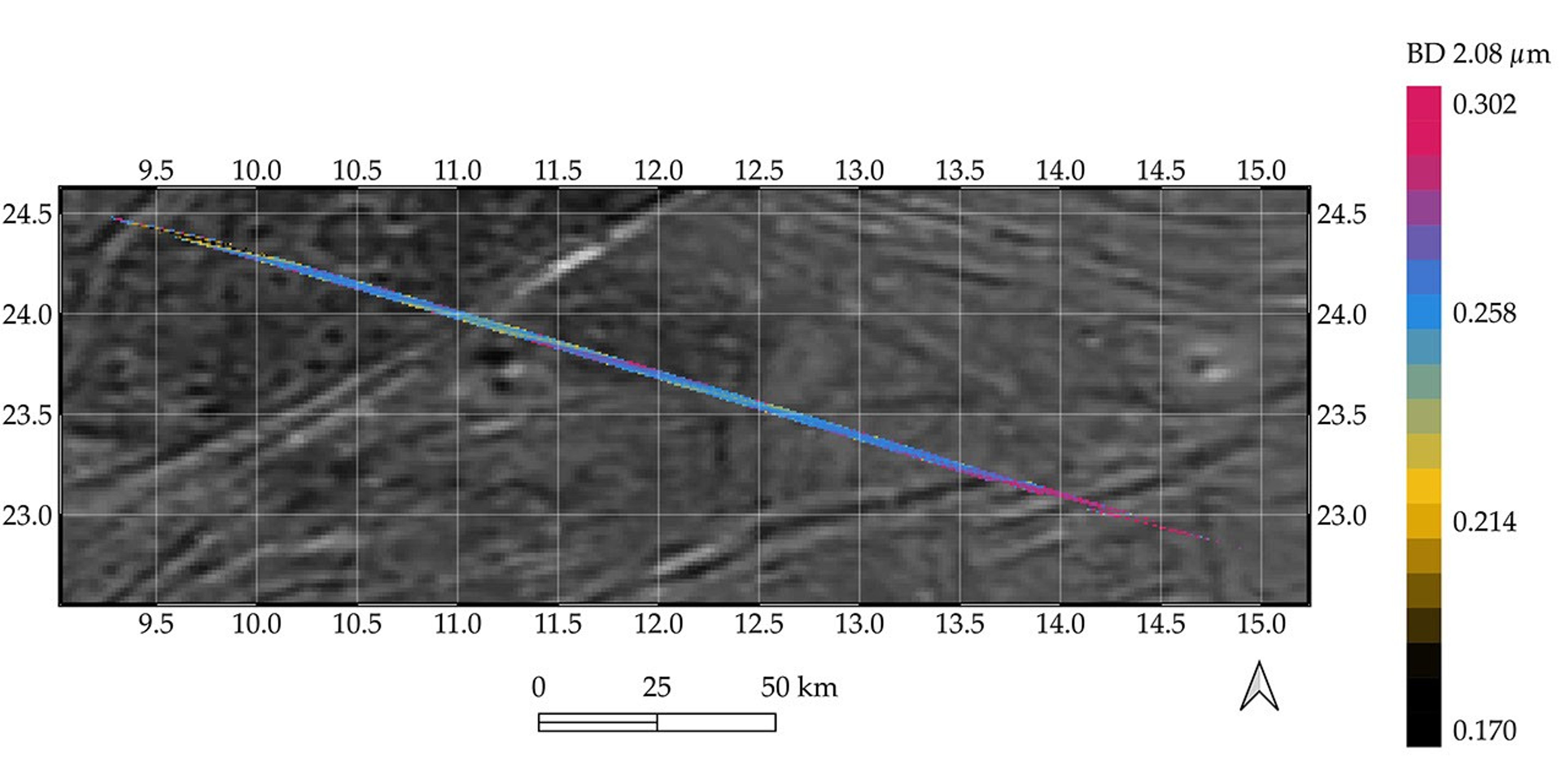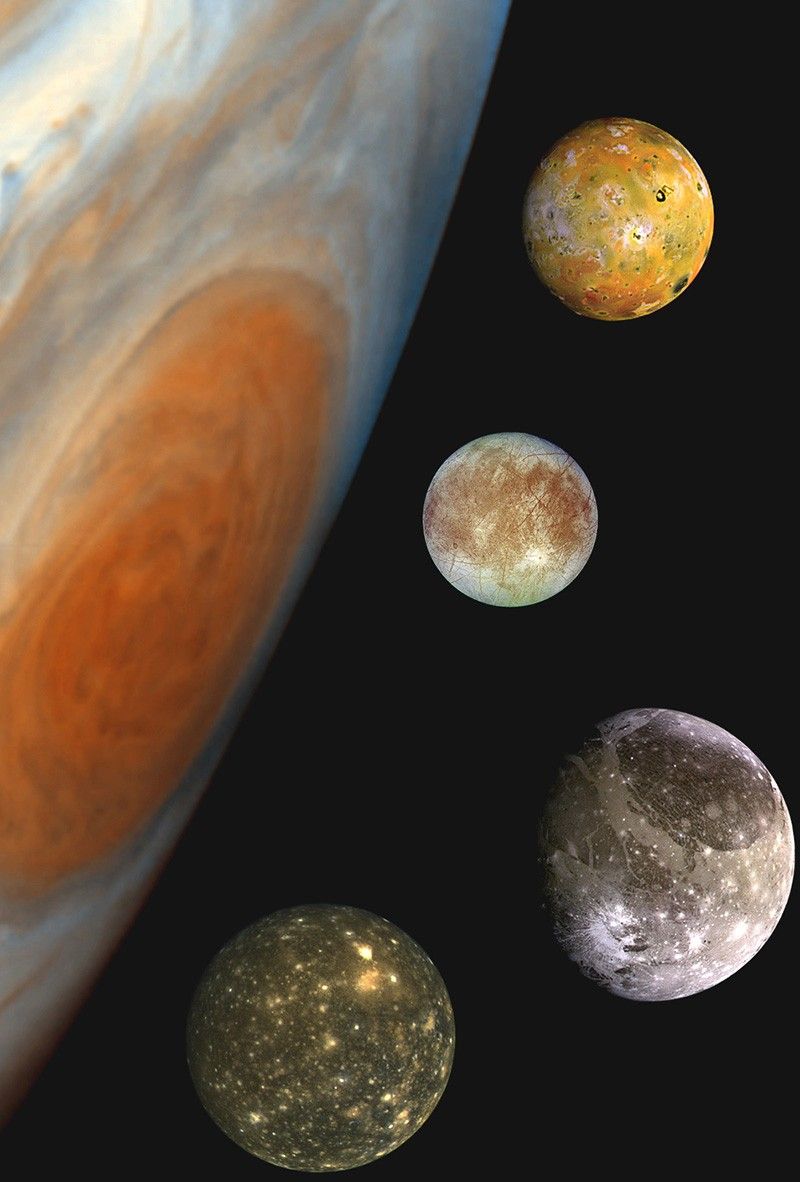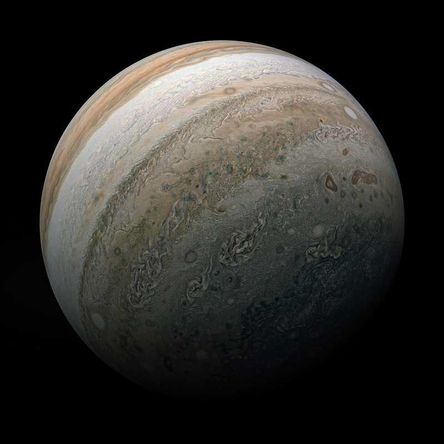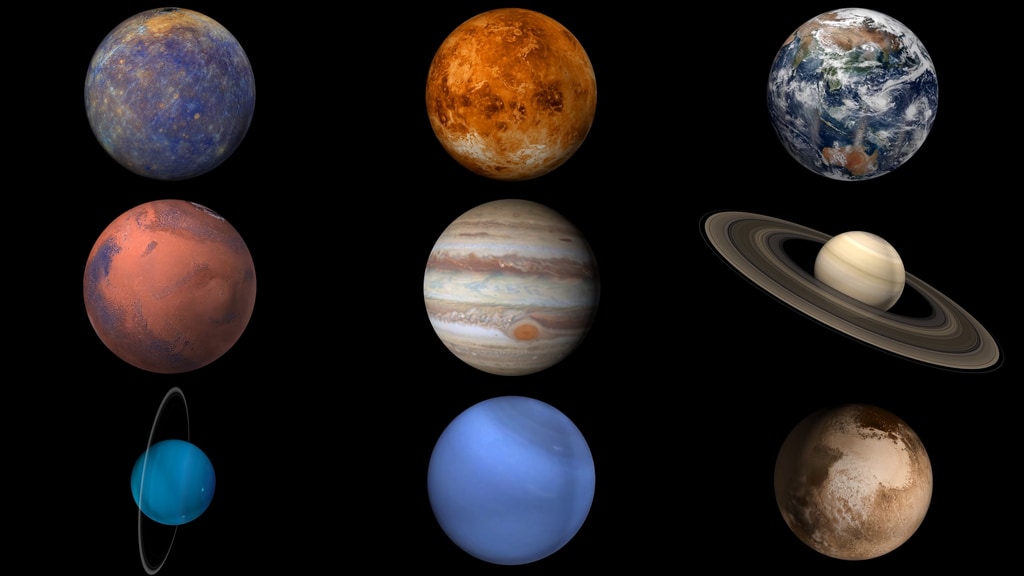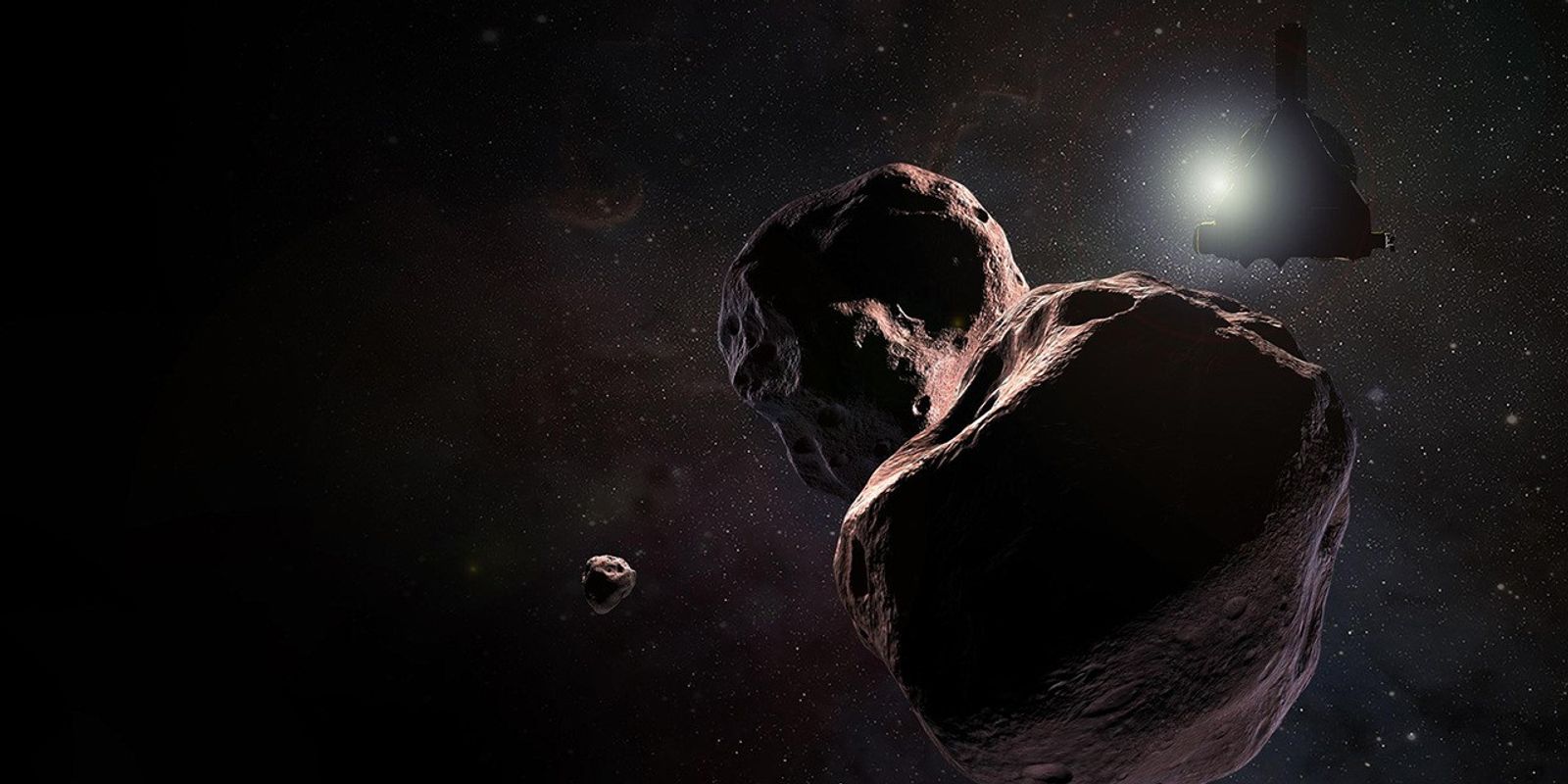
Ganymede
The largest moon in the solar system, this icy world is the only moon to have its own magnetic field – and the atmospheric auroras that come with that.
Jupiter’s icy moon Ganymede is the largest moon in our solar system, even bigger than the planet Mercury, and the dwarf planet Pluto. There’s strong evidence that Ganymede has an underground saltwater ocean that may hold more water than all the water on Earth's surface. It might even have ice and oceans stacked up in several layers like a club sandwich.
Ganymede is the only moon known to have its own magnetic field – something typically found on planets like Earth. The magnetic field causes auroras, or bright ribbons of glowing gas, that circle the moon’s poles.
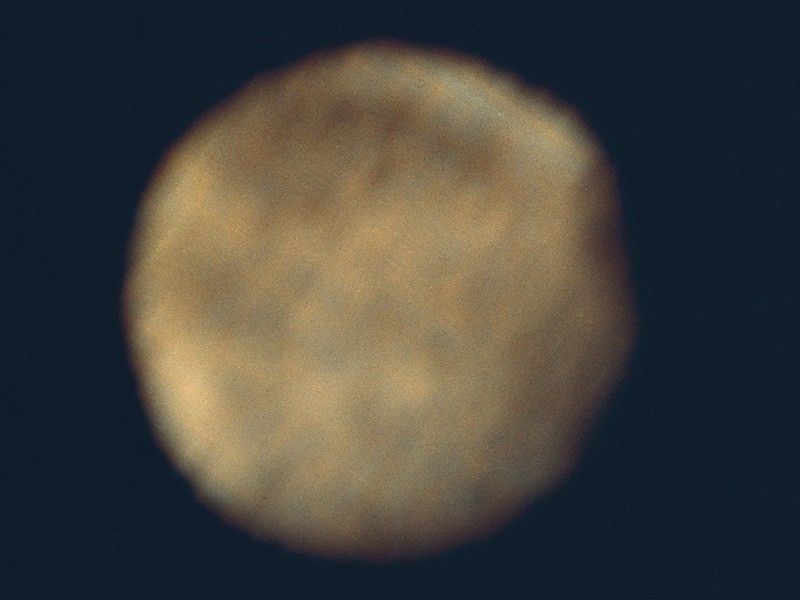
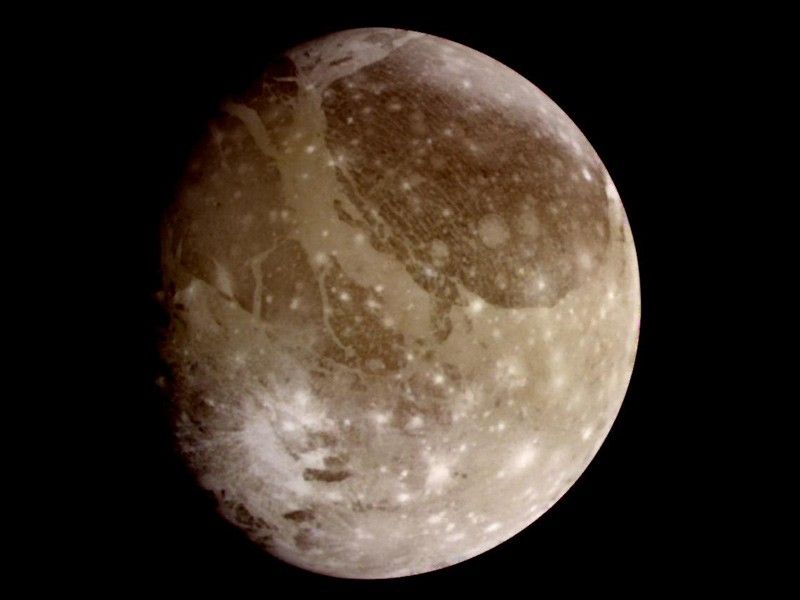


two views of Jupiter's moon
Ganymede, As Seen by Pioneer 10 and Galileo
Ganymede – A Fresh Look
Several NASA probes have explored Jupiter and its moons, including Ganymede. The Juno spacecraft was most recent, taking detailed photographs of Ganymede in June 2021.
Images taken by Juno on June 7, 2021, provided a fresh look at features on Ganymede’s surface including craters, clearly distinct dark, and bright terrain, and long structural features possibly linked to tectonic faults. Deep inside Ganymede, there’s a metallic iron core that generates the moon's magnetic field. A shell of rock surrounds the core, and another icy shell surrounds the rock.
There is evidence Ganymede has a tenuous oxygen atmosphere.
















